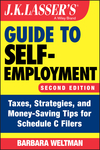Congress Helps With Disaster Relief
In response to Hurricanes Harvey, Irma, and Maria, which impacted people in Texas, Louisiana, Florida, Georgia, Puerto Rico, and the U.S. Virgin Islands, the IRS has provided various types of tax relief (https://www.irs.gov/newsroom/irs-offers-help-to-hurricane-victims-a-recap-of-key-tax-relief-provisions-available-following-harvey-irma-and-maria). Now Congress has approved certain tax breaks to help the Hurricane victims, which the President signed into law on September 29 (Disaster Tax Relief and Airport and Airway Extension Act of 2017). The disaster tax relief measures are paired with funding for airports and airways (e.g., extensions to March 31, 2018, of fuel and ticket taxes that had expired on September 30, 2017). Going forward, the new law also requires that homeowners with federally-backed mortgages must have flood insurance if they’re located in a flood hazard area.
Personal casualty losses
If homeowners or renters insurance is less than property damage to a home, you generally must itemize to claim a deduction for a casualty loss. However, if you are a victim of Hurricanes Harvey, Irma, or Maria, the new law allows you to take the deduction for the storm-related damage directly from gross income without having to itemize. In claiming this “above-the-line” deduction, you must reduce the loss by $500 (rather than $100), but the loss is not subject to the 10% of adjusted gross income floor that usually applies to casualty losses for personal-use assets.
Hardship distributions and loans from qualified retirement plans and IRA distributions
Qualified employer retirement plans are allowed to make hardship distributions and loans. The new law provides key tax breaks for individuals who lived in the Hurricane Harvey, Irma, or Maria disaster area and who suffered an economic loss from the storm:
- The income from up-to $100,000 of distributions made before January 1, 2019 is spread over three years (unless the taxpayer opts to report it all at once). For such distributions, the 10% early distribution penalty is waived. In addition, the distributions can be recontributed to the plan within three years, in which case the withdrawal and the recontribution will be treated as a tax-free rollover. These rules apply to IRA distributions as well as distributions from qualified employer retirement plans.
- The limit on loans from qualified employer retirement plans taken by December 31, 2018 is upped to the lesser of $100,000 (instead of the usual $50,000 limit), or 100% of the account balance (instead of the usual 50% of the account balance).
- If there was a qualified employer retirement plan loan outstanding at the time of the hurricane and a repayment is due on or before December 31, 2018, the repayment due date is delayed by one year.
Charitable contributions
Usually cash donations are deductible only up to 50% of adjusted gross income (AGI). The new law suspends the 50% AGI limit and allows a deduction for up to 100% of AGI for donations made between the date of the hurricane and December 31, 2017 for Hurricane Harvey, Irma or Maria relief efforts. Donors must obtain a contemporaneous written acknowledgment from the charity that the donation was or will be used for such hurricane-related relief. Qualifying donations are exempt from the phaseout rule that limits itemized deductions of certain higher-income taxpayers.
Employer retention credit
If you live and work in a designated hurricane area, your employer may continue to pay you even though the premises are closed. Companies located in these area that keep workers on the payroll can claim a tax credit of 40% of the first $6,000 in wages paid between the hurricane and January 1, 2018. There is no limit on the number of employees to which this credit can be claimed. However, employers cannot double dip by also claiming the work opportunity credit for an eligible employee; they must choose which credit to claim.



